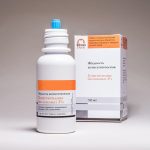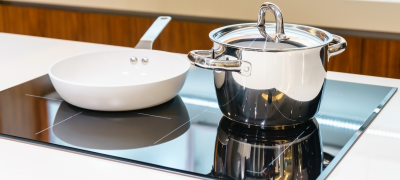Description and application of chlorhexidine
Among the domestic antiseptics produced today, chlorhexidine occupies one of the leading places, as evidenced by numerous ratings and monitoring of its use.
The popularity and demand for this drug are explained by a wide range of applications, effectiveness, and affordable price. It is produced in various forms and packages, therefore, during an exacerbation of the epidemiological situation, it can be used not only for personal protection against viruses of various origins, but also in industries, organizations and enterprises.
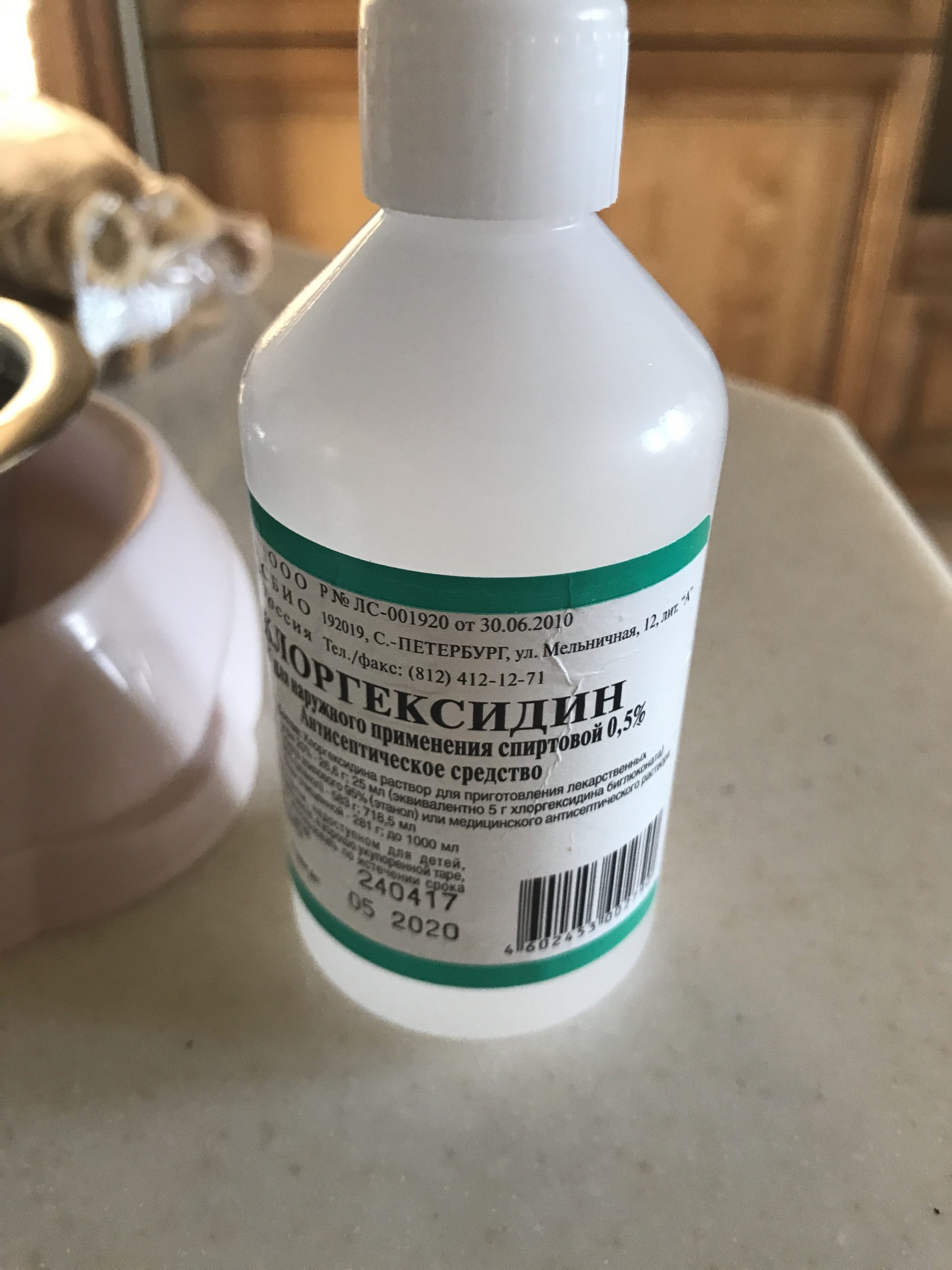
- What is Chlorhexidine
- Forms of release and their composition
- Spray
- Water solution
- Alcohol solution
- Indications for use
- Contraindications and possible side effects
- Instructions for use
- For external use
- How it interacts with other drugs
- Shelf life and storage conditions
- Video: instructions for the use of chlorhexidine
What is Chlorhexidine
Chlorhexidine is an effective high quality external disinfectant with a pronounced antiseptic effect. It is provided by the main active ingredient of the drug - chlorhexidine bigluconate.
The sanitizer has a depressing effect on a significant part of bacteria, although it is not absolutely universal, however, like any drug. Chlorhexidine solution does not have an unpleasant, pungent odor, does not require rinsing, is affordable, easy to use.

It is used for the treatment of the skin, in medical facilities before surgery and for sterilization of surgical instruments. And also it is used for cleaning wounds, for dental and ENT diseases, in gynecology and other areas of medicine.
Forms of release and their composition
The drug is presented in various forms, which allows widespread use and creates comfortable conditions for its use.
Chlorhexidine is available in the following forms:
- in the form of 0.5% alcohol and 0.05% water spray using high-quality purified water;
- alcohol solution, where isopropyl alcohol (propanol-2) is 62.5%, and chlorhexidine bigluconate is 0.5%;
- aqueous, in which the concentration of chlorhexidine bigluconate can be 0.05, 0.5, 1, 5 or 20%;
- rectal and vaginal suppositories, which contain chlorhexidine bigluconate (8 or 16 mg); panthenol and polyethylene oxide.
The solution is available in bottles of different sizes: from 50 ml to 1 liter. For medical institutions, it is bottled in cans of 3 and 5 liters.
The choice of form and composition allows the use of the drug, depending on the degree of infection and individual characteristics of the person.
Spray
Aerosol packaging is considered very convenient to use, as it allows you to always have the drug with you without worrying about it spilling. Designed for treating hands and surfaces that require disinfection.

If chlorhexidine is used to treat hands, then it is necessary to rub the composition into the skin for about two minutes.
In medical practice, it is applied to hands cleanly washed with water and soap, hands dried with a sterile napkin in two steps, in 5 ml portions, rubbing into the skin, maintaining a moist state for three minutes.
When donating blood, the bend of the elbow is disinfected with a spray applied to a cotton swab for two minutes.
Surfaces in operating rooms can also be sprayed, but it is necessary to treat them with the composition for at least one minute.
This form of disinfection is adopted on small surfaces and is more suitable for individual use.
Water solution
It has an antiseptic and antimicrobial effect, but it is not suitable for the destruction of bacteria, microbial spores and fungi. Effectiveness is maintained for four hours from the moment of treatment. It also helps to remove suppurations and blood clots. At the same time, it retains its disinfecting properties.
It requires careful handling, but if swallowed during rinsing, it is not absorbed into the walls of the gastrointestinal tract and does not spread through the blood.

An aqueous solution is used:
- with erosion of the cervix;
- colpitis;
- prevention of sexually transmitted diseases;
- in dentistry;
- for the treatment of burns and postoperative wounds.
Alcohol solution
The alcohol solution has limitations and is not used to treat mucous membranes, as it causes a burning sensation. Used to clean the hands of nursing staff, the operating table and equipment prior to examination or surgery.

Attention! Alcohol solution of the drug is intended for external use only, oral administration is not allowed!
Indications for use
The use of chlorhexidine, according to the instructions for use, is due to its concentration and form of release. The drug is used for therapeutic purposes for a number of ailments:
- for the prevention of infectious diseases in the postoperative period in dentistry, for the treatment of dentures, as well as for rinsing the gums;
- in gynecology - with thrush, before and after surgery, in order to avoid infection, during various procedures;
- in the treatment of dermatitis of bacterial or fungal origin;
- for the treatment of purulent wounds, infectious diseases of the mucous membranes.
For children
Despite the wide range of applications, the drug should be used with great care in the treatment of children. The instructions always contain an indication of the age limit: it is not recommended to use for children under 12 years old. True, this applies to alcohol solutions.
Aquatic can be used when carrying out oral cavity applications for babies. But even this harmless one should not be used for a child without consulting a pediatrician.

Pregnant and breastfeeding women
Pregnancy and breastfeeding time is a special period in a woman's life. She is responsible not only for herself, but also for the baby, who is attached to her not only psychologically, but physiologically.
Chlorhexidine is one of those drugs that, according to experts, do not adversely affect a woman's health during pregnancy and breastfeeding. It does not affect the development of the fetus and infant, and does not pass into breast milk.
Before and after childbirth, candles can be used for sanitation from 5 to 10 days. It is used 1-2 times a day to carry out part of the therapeutic measures in complex treatment.

Contraindications and possible side effects
Long-term practice has confirmed that the drug has practically no contraindications. Everything is limited to individual intolerance.
In rare cases, itching, swelling and redness may occur.
There is no evidence that overdose is possible.
Side effects include:
- change in taste;
- inflammation of the salivary glands;
- irritation of the oral cavity.
The drug should be discontinued in the following cases:
- in case of allergic reactions;
- shortness of breath;
- skin rashes and swelling of the face and throat.
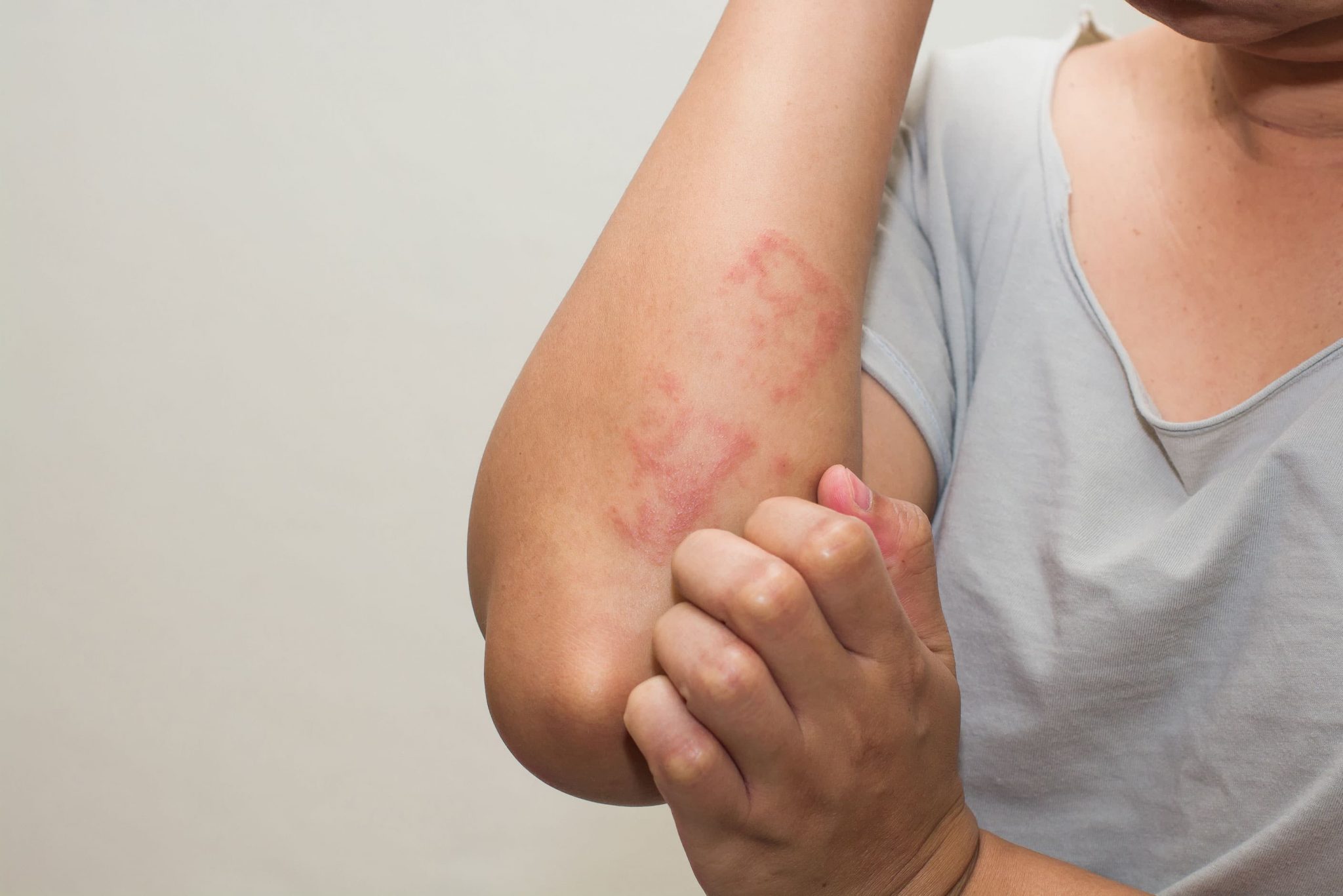
All these troubles are associated exclusively with individual intolerance.
Instructions for use
The instruction provides for the use of various pharmacological forms and volumes of the drug.
The main condition is for external use only! In no case should you drink it, it is undesirable to swallow it while rinsing.

The instruction is an expanded information sheet, which provides recommendations for using the tool in the following cases:
- for various diseases, a list of which is given and the recommended doses are given, as well as the time of use of the product;
- for different age groups.
Separate points consider the use of the drug for pregnant and lactating mothers, as well as for children. In both cases, the dosage is indicated, and for children, the age limit.
With ENT diseases
ENT diseases are one of the areas where chlorhexidine is used. It is used for gargling with sore throat and other inflammatory processes occurring in the throat and nasopharynx. Effective in the following cases:
- to remove purulent plugs and free the cavity from pus;
- moisturizing mucous membranes;
- accelerating the healing process;
- more intensification of the action of antibiotics in the treatment of infectious diseases.

Its use prevents the further development and reproduction of bacteria.
Chlorhexidine is not used as an independent remedy for ENT diseases; it is most beneficial in combination with antibiotics and antiviral drugs.
For gargling
An aqueous solution of the drug can be used to rinse the throat of sick people, regardless of their age. However, it is worth remembering that only a doctor can recommend its use, especially for children, pregnant and lactating mothers.
Chlorhexidine for rinsing can be prepared as follows: at a concentration of 0.2%, dilute with water at a rate of 1: 4; at 0.5% - 1:10; 1% - 1:20; 5% - 1: 100.

For the remedy to work effectively, you need to know how to properly gargle with chlorhexidine. know how to properly gargle with chlorhexidine. This should be done by throwing your head back a little, looking up and uttering any vowel sound as you exhale. The procedure is carried out for at least 30 seconds.
After rinsing, spit out the solution. You need to try not to swallow the medicine, but if this still happened, you need to rinse, then take activated charcoal, or any other; antisorbent. After rinsing your throat, you should refrain from eating and drinking for two hours.
For rinsing the nose
The drug can be used for rinsing the nose with sinusitis, sinusitis, runny nose, acute respiratory viral infections and acute respiratory infections, as well as with fungal diseases or boils, with inflammation of the sinuses.

Experts recommend starting flushing at the first symptoms of a runny nose or inflammation. In this case, mucus and pus will not interfere with the antibacterial effect of the drug. Timely carrying out of the procedure will help alleviate the course of the disease, as well as:
- prevents drying out of mucous membranes;
- clears the nasal cavity from mucus;
- destroys pathogenic bacteria.
Nasal lavage is performed with a 0.05% aqueous solution of the drug, having previously freed the nasal cavity from mucus. Pour the solution heated to 35 degrees alternately into the nostrils, tilting the head to one side. Then blow your nose well. If the product gets into your mouth, be sure to spit it out, do not swallow it.

For instillation into the ear
Ear infections, as well as diseases associated with the ears, appear as a result of colds or infectious diseases. The most common among them is otitis media, leading to hearing loss. Instillations can be used to ease the course of the disease and speed up recovery.
They are relevant:
- with otitis media, rhinitis, sinusitis;
- inflammation of the middle ear;
- with the formation of sulfur plugs;
- with purulent discharge from the ear;
- for the prevention of ear diseases, as well as wound healing.

The procedure is carried out as follows:
- to seat the patient on a chair;
- dilute chlorhexidine in purified water in a 1: 1 ratio;
- draw the solution into a syringe without a needle;
- gently inject the drug into the sore ear.

Important! It is necessary to prepare a container where the liquid from the ear will drain.
In dentistry
Chlorhexidine has found applications in dentistry. It is used in the treatment of gingivitis, stomatitis, periodontitis, gum disease and other diseases.
It is also recommended by dental technicians for cleaning removable dentures.
After tooth extraction
Tooth extraction is a complex surgical operation in dentistry, after which discomfort can often occur. In this case, it is important that inflammation does not occur at the site of removal. To prevent it, as well as to protect the injured area from the penetration of microbes, rinses with chlorhexidine are prescribed.

This is a remedy that has practically no contraindications, which is capable of destroying fungi, pathogenic bacteria. There are no application restrictions.
With gum disease
Inflamed gums are an indicator of tissue infection. The drug is effective against microflora that causes inflammatory processes. Rinsing should be done twice a day. It is especially important to do this after a meal, but not earlier than half an hour later.
The course is designed for 10 days; it must be carried out as follows:
- take a tablespoon of chlorhexidine into your mouth and rinse the cavity;
- you do not need to throw your head back;
- do not swallow the medicine, but spit it out.

In gynecology
Since the drug is intended for external use and has excellent disinfecting properties, it is used in obstetrics and gynecology in the form of douching for colpitis, cervicitis, candidiasis, vulvovaginitis, bacterial vaginosis, as well as for the prevention of sexually transmitted diseases and the prevention of infections after unprotected sex. It is also used after gynecological surgeries.
For external use
The antiseptic is not intended for oral administration or injection and is used only for external use:
- for the prevention and treatment of fungal diseases;
- treatment of wounds and prevention of their infection;
- for cosmetic purposes - in the fight against acne;
- for the processing of medical equipment.
To treat wounds
In case of injuries and damage to the skin, the agent has a bactericidal effect that helps to avoid infection. At the same time, it is important that only an aqueous solution of an antiseptic with a concentration of 0.05% is used for treating wounds.

It can be used to wash fresh and purulent wounds, to process postoperative stitches.
From fungus
Possessing an antifungal effect, the drug destroys spores of any types of pathogens of skin and nail mycoses. Suitable for the treatment and prevention of fungal infections with an active antiseptic effect. The most acceptable solution is 0.5%, which does not irritate the skin and actively fights against pathogenic fungi.
For acne on the face
Chlorhexidine's versatile properties allow it to be used in the fight against acne. It actively penetrates into the skin and destroys microbes, cleans their "habitat", removes dead skin tissue. To obtain the desired result, the skin is treated with a cotton swab moistened with a medicinal composition.

How it interacts with other drugs
Chlorhexidine cannot be combined with a number of drugs that are usually reported by the instruction. The remedy presented in the form of suppositories is absolutely incompatible with iodine preparations, it is not “friendly” with soap and some other medicines.
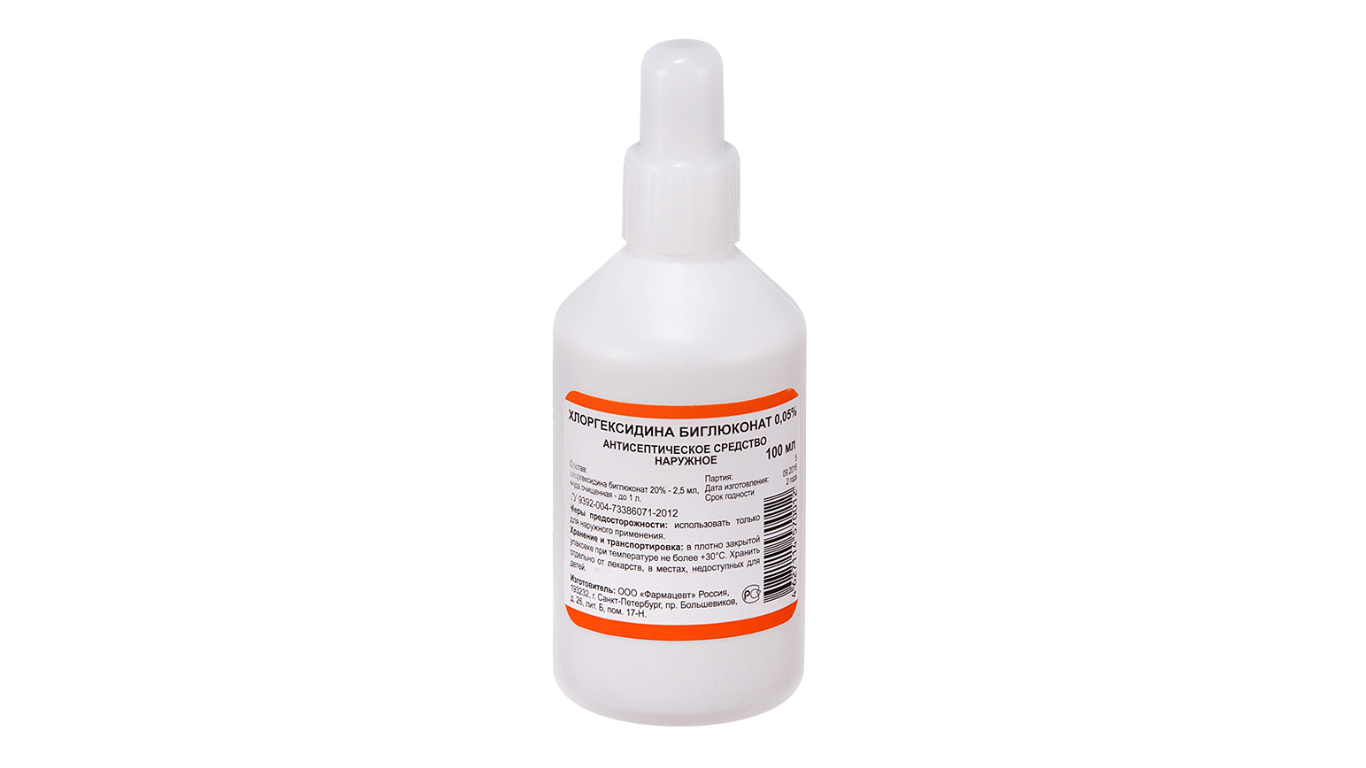
Shelf life and storage conditions
You can buy it without a prescription. You need to store at temperatures up to +25 degrees. The shelf life of solutions is three years, candles are two.
Video: instructions for the use of chlorhexidine
